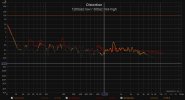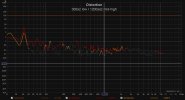Good point. But an Earthquake is not sound. The ground moving is not sound. The sound is created by the earthquake but the ground moving is due to shifting plates.Yeah but an earthquake literally is all around you. Doesn’t matter where the epicenter was. The ground is undulating all around you.
I can hear the bass in the Kitchen and front bedroom and garage which are the farthest rooms from the Sub. But when far away I can’t tell what direction it is coming from as it feels like it’s coming from all directions at once. I only feel a sense of direction when I am within 10 feet or so from the front of the Ported Subs. This is just my personal experience and I know my room and furnishings all play into how the bass waves move in the room. My brain knows the the size of the sound wave of 20Hz is about 60’ feet long give or take. That means that the sound hits everything in the room up to 60 feet away at exactly the same moment. Maybe the closer to the source reduces the amount of reflected energy and permits the mind to sense the source? It’s not port wind because at 20Hz the speaker is barely moving (they are tuned to 12Hz). It’s a mind game.

